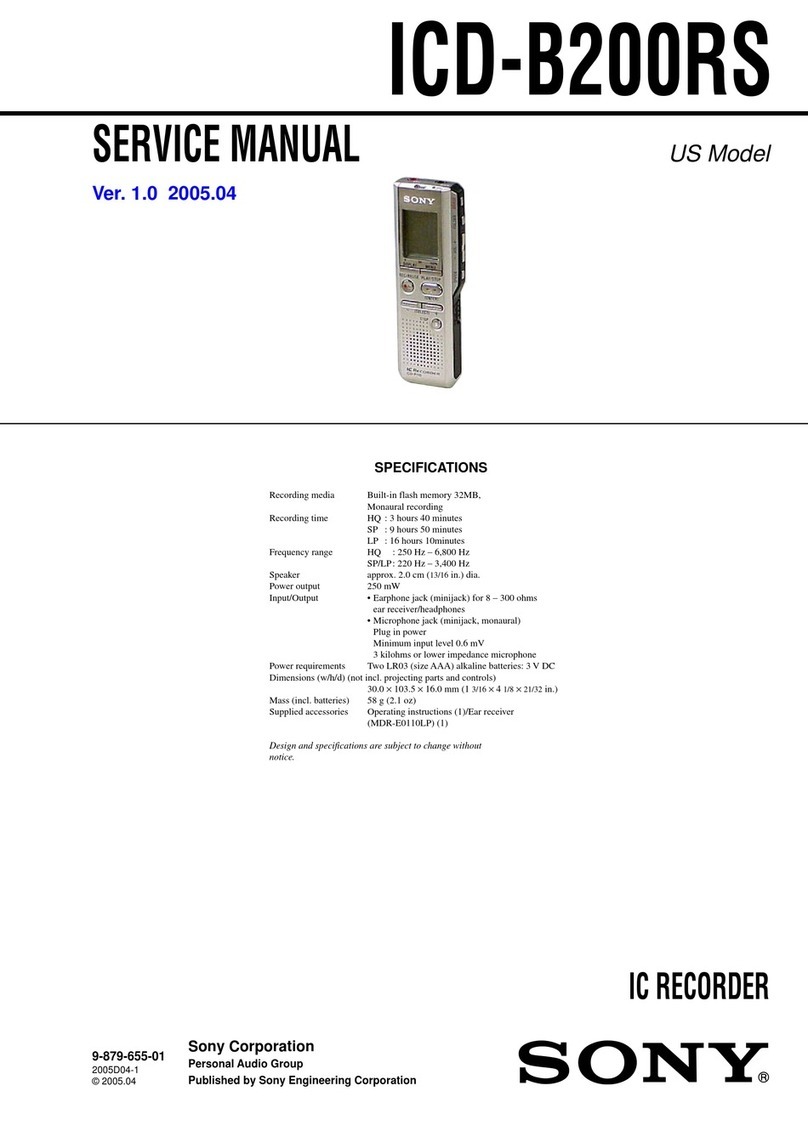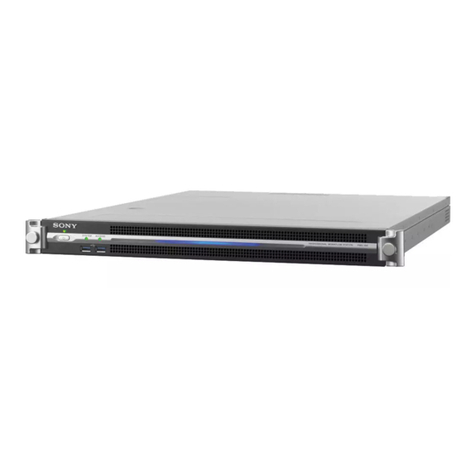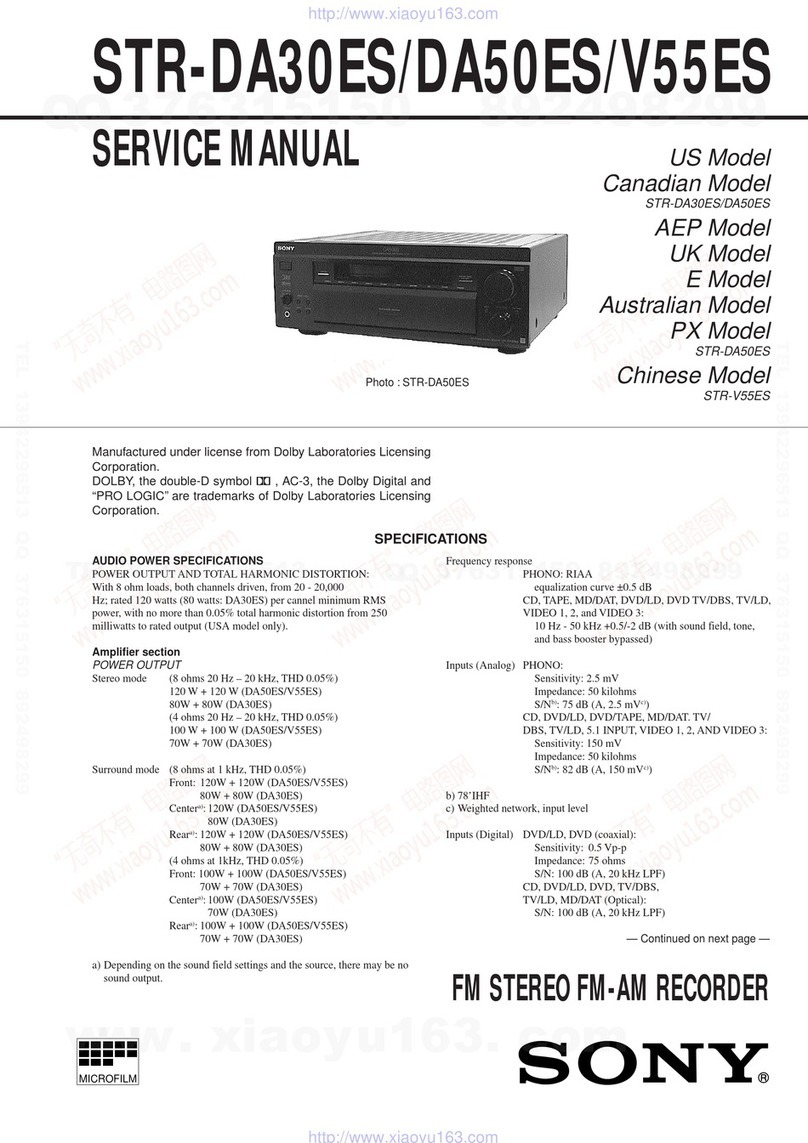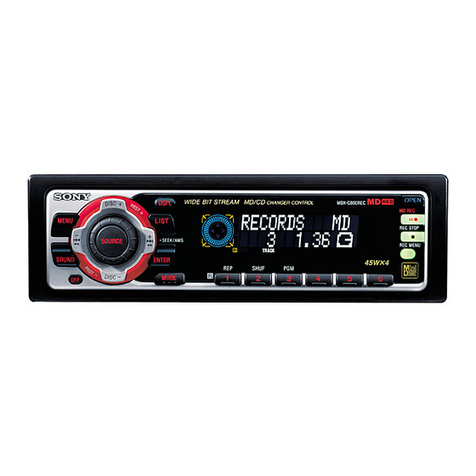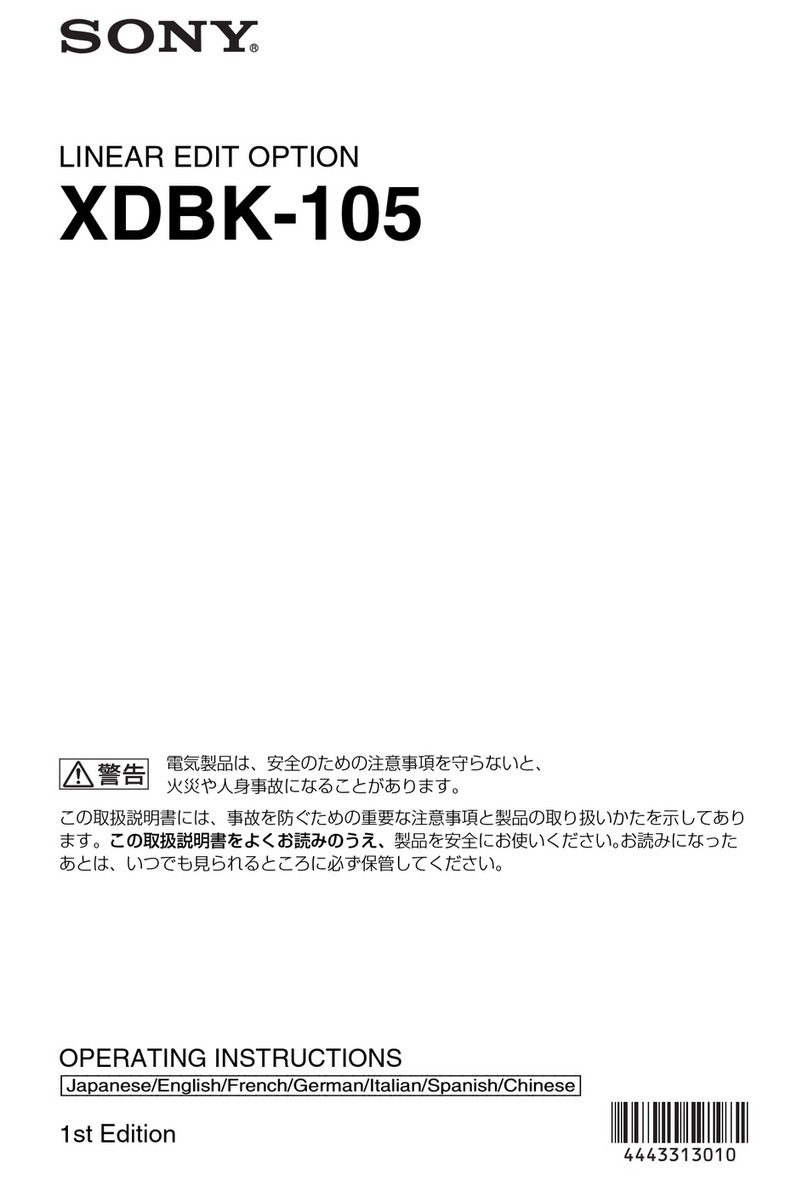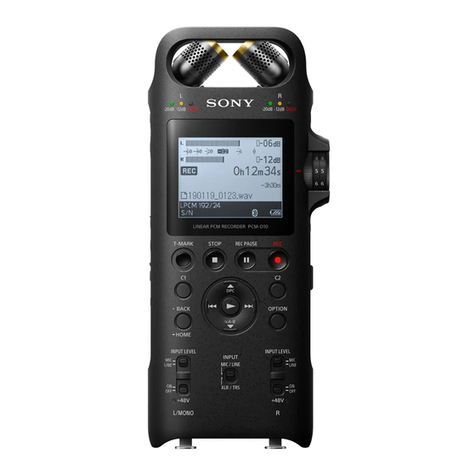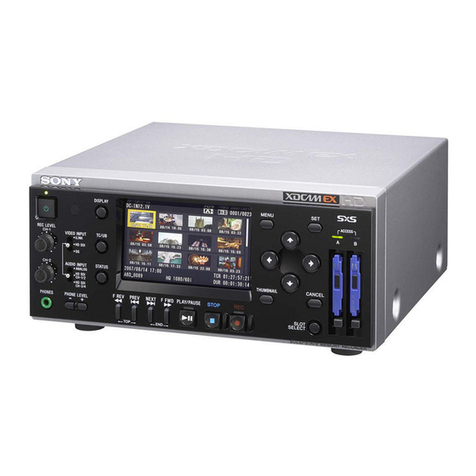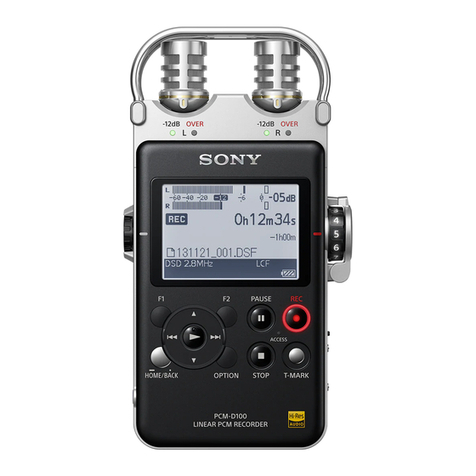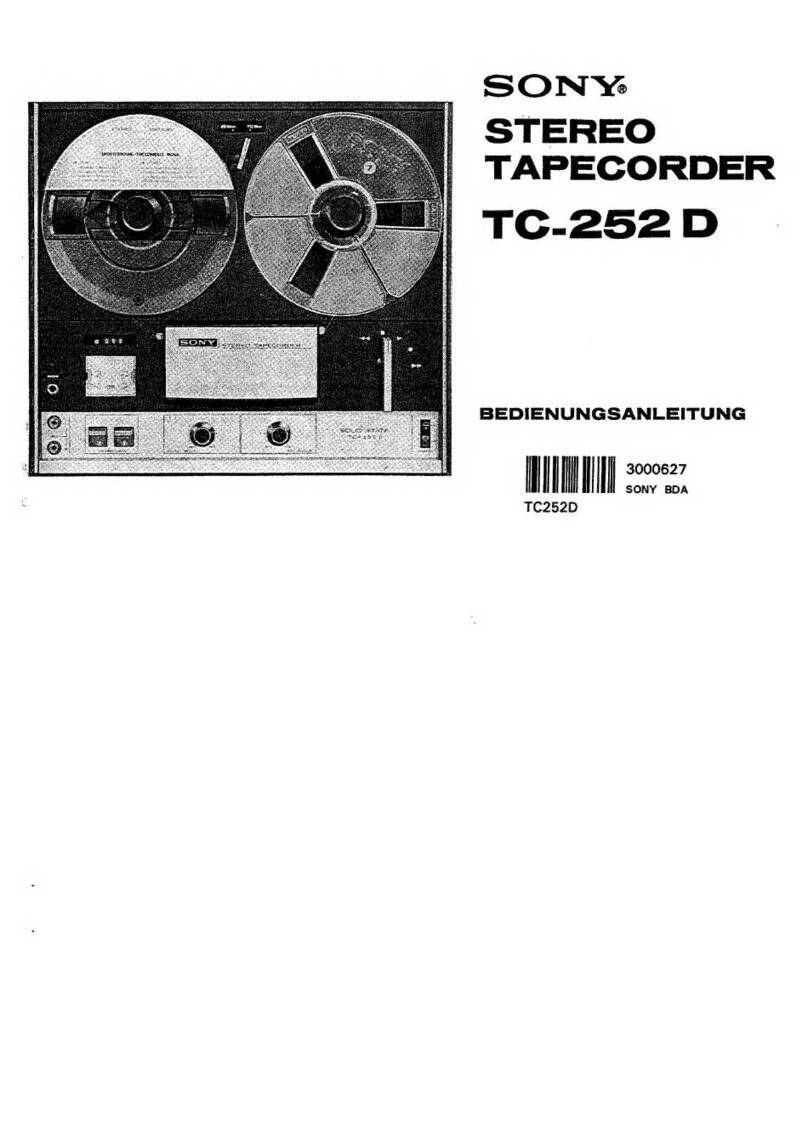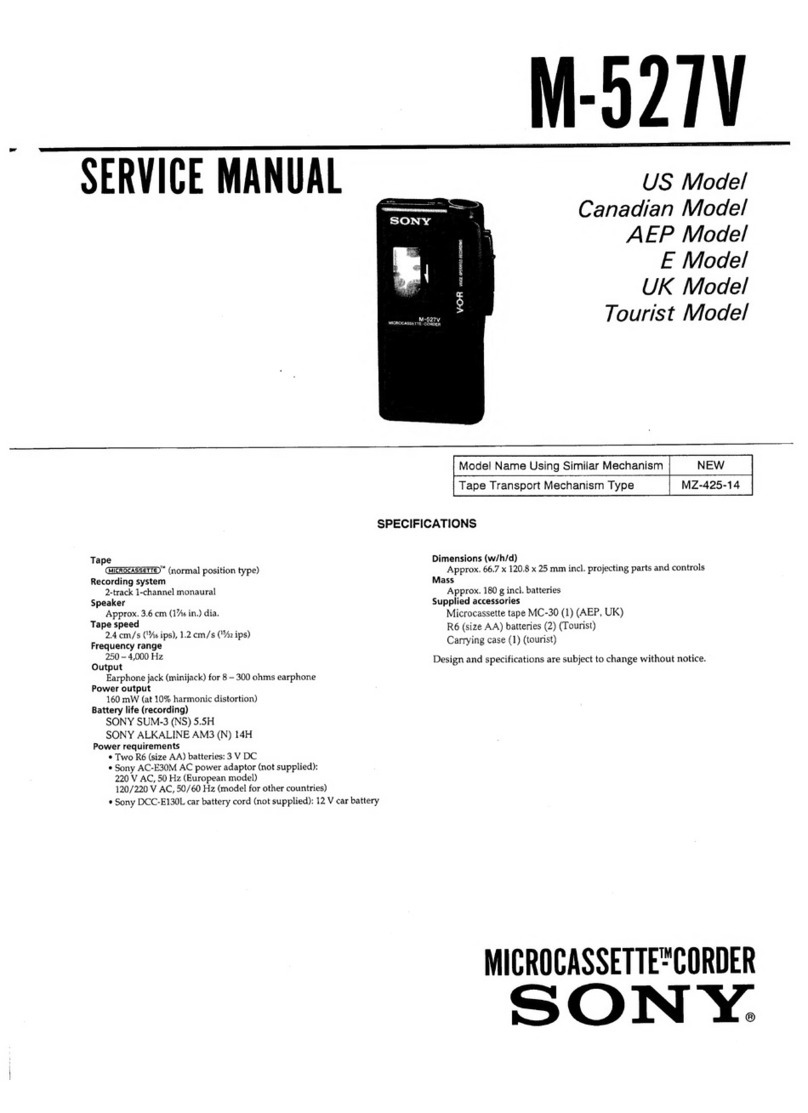
SERVICE MANUAL
Sony Corporation
Published by Sony Techno Create Corporation
ICD-LX30
SPECIFICATIONS
MEMORY CARD RECODER
9-893-342-01
2011J33-1
© 2011.10
E Model
Chinese Model
Ver. 1.0 2011.10
Note:
Be sure to keep your PC used for service and
checking of this unit always updated with the
latest version of your anti-virus software.
In case a virus affected unit was found during
service, contact your Service Headquarters.
CAUTION
Danger of explosion if battery is incorrectly replaced.
Replace only with the same or equivalent type.
PNote
This memory card recorder does not have
an internal memory. You must insert a
memory card to record a file.
Frequency range
75 Hz - 20,000 Hz
Recording format
Audio compression format (codec): MP3
Bit rate: 192 kbps
Sampling frequency: 44.1 kHz
File extension: .mp3
Formats that can be played back
Audio compression format (codec): MP3*1
Bit rate: 32 kbps - 320 kbps, VBR
Sampling frequencies: 16 kHz/
22.05 kHz/24 kHz/32 kHz/44.1 kHz/
48 kHz
File extension: .mp3*1
Speaker
Approx. 36 mm dia.
Input/Output
Microphone jack (minijack, stereo)
– input for plug in power, minimum input
level 1.0 mV
DC IN 3V jack
SD memory card slot
Headphone jack (minijack, stereo)
– output for 16 ohms - 300 ohms impedance
headphones
Rated power consumption
780 mW
Power output
330 mW
Power requirements
Two LR03 (size AAA) alkaline batteries
(supplied): 3.0 V DC
DC 3.0 V: When using the AC adaptor*2
Two NH-AAA-B2KN rechargeable
batteries (not supplied): 2.4 V DC
Operating temperature
5°C - 35°C
Dimensions (w/h/d) (not incl. projecting
parts and controls) (JEITA)*3
Approx. 116 mm × 28.5 mm × 78 mm
Mass (JEITA)*3
Approx. 145 g including two LR03 alkaline
batteries
*1Not all encoders are supported.
*2The AC adaptor is supplied with Chinese/
Korean model only.
*3Measured value by the standard of JEITA
(Japan Electronics and Information
Technology Industries Association)
Capacity of the supplied SD memory
card with the memory card recorder
(User available capacity)
2GB
(approx. 1.80 GB = 1,932,734,976 Byte)
A part of the memory capacity is used as a
management area.
Supplied accessories
Design and specifications are subject to
change without notice.
Memory card recorder (1)
SD memory card (2GB) (1)
AC adaptor* (1) AC-ES3010K2
LR03 (size AAA) alkaline batteries (2)
Carrying pouch (1)
Hand strap (1)
The strap is attached via the strap hole of
the memory card recorder.
Quick Start Guide
Operating Instructions
The operating instructions are stored as
PDF files in the supplied SD memory
card with the memory card recorder.
* The AC adaptor is supplied with
Chinese/Korean model only.
Maximum recording time*1*2
The maximum recording time of all the folders is as follows.
*1When you are going to record continuously for a long time, you may have to replace the batteries
with new ones in the midst of recording. For details on the battery life, see the next table.
*2The maximum recording time in the above table is for your reference only, and may differ
depending on the card specifications.
Battery life
When using Sony LR03 (SG) (size AAA) alkaline batteries*1
When using Sony NH-AAA-B2KN rechargeable batteries*1
*1The battery life is measured in testing using methods proprietary to Sony. The battery life may
shorten depending on how you operate the memory card recorder.
*2When playing back music through the internal speaker with the volume level set to 14
SD memory card
2 GB 4 GB 8 GB 16 GB 32 GB
22 hr. 20 min. 44 hr. 40 min. 89 hr. 25 min. 178 hr. 357 hr.
(hr.: hours/min.: minutes)
Recording Playback through
speaker*2
Playback using the
headphones
32 hr. 13 hr. 31 hr.
(hr.: hours)
Recording Playback through
speaker*2
Playback using the
headphones
22 hr. 10 hr. 20 hr.
(hr.: hours)

